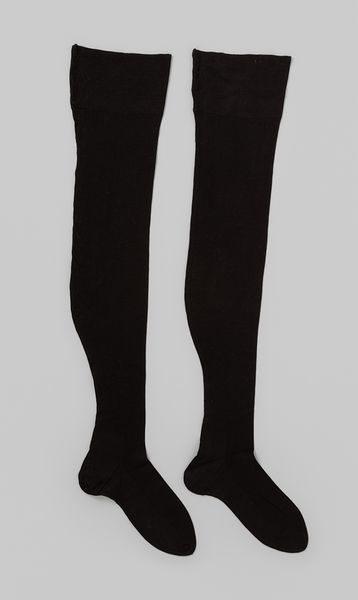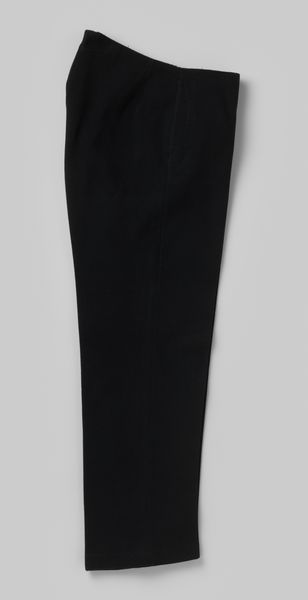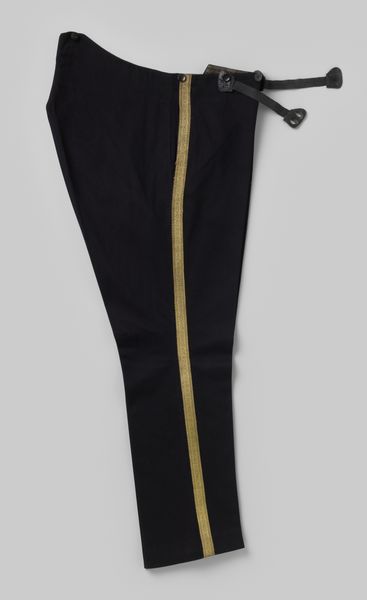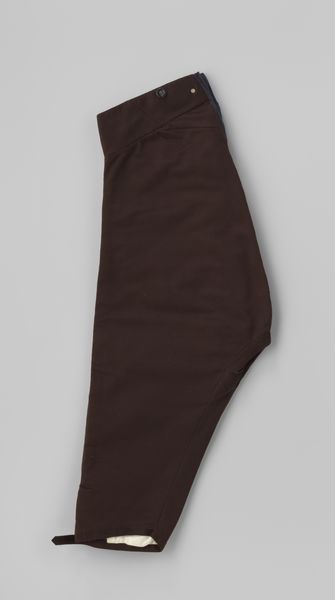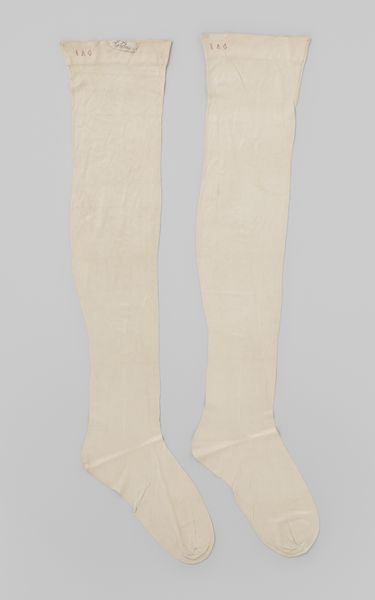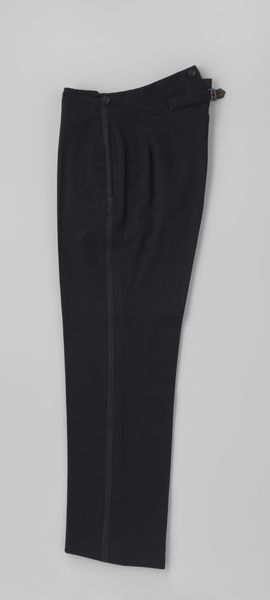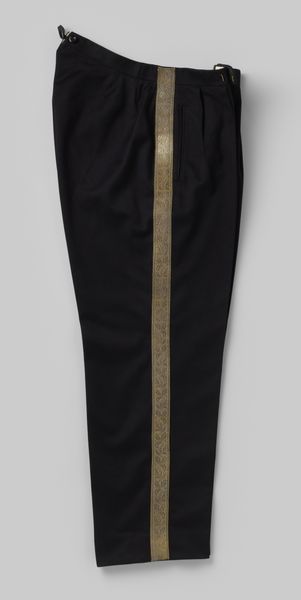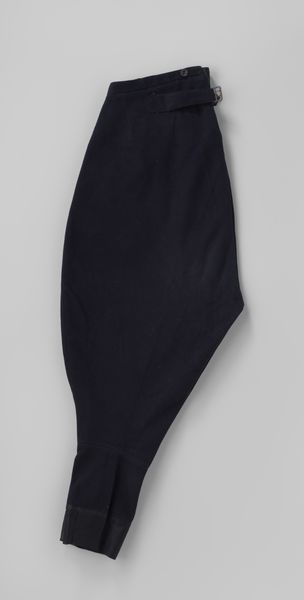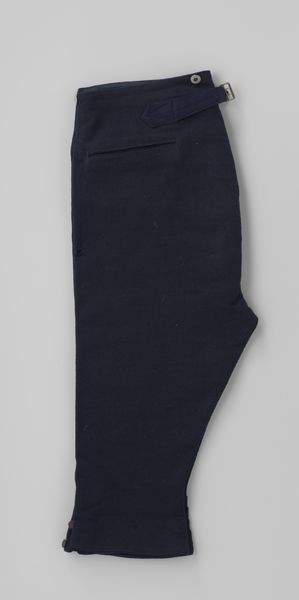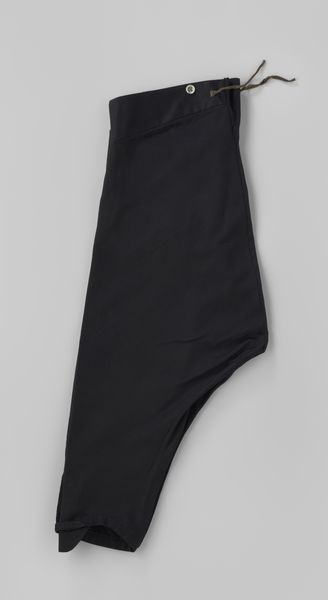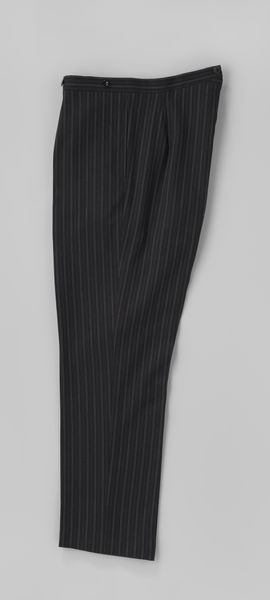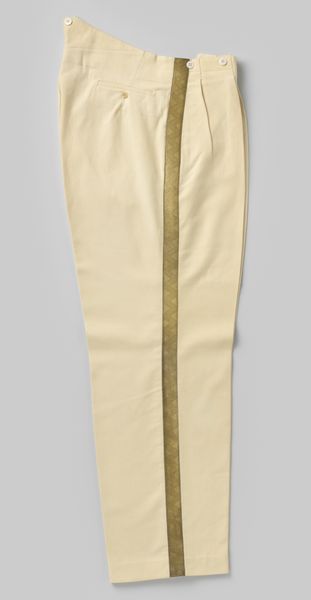
Kous van bruinzwarte glanskatoen met een smalle verticale streep op de klink eindigend in een eikelvormig motief en twee beigekleurige strepen in de smalle boord c. 1800 - 1820
0:00
0:00
textile, photography
#
textile
#
photography
#
romanticism
Dimensions: length 76 cm, width 16.5 cm, length 25 cm
Copyright: Rijks Museum: Open Domain
Curator: Alright, let's discuss these stocking. We have here, "Kous van bruinzwarte glanskatoen met een smalle verticale streep op de klink eindigend in een eikelvormig motief en twee beigekleurige strepen in de smalle boord" or a stocking in a dark brown, shiny cotton, featuring a thin vertical stripe near the seam, ending in an acorn shaped motif, finished with two beige stripes at the top hem, circa 1800-1820. Editor: Huh, the first thing that comes to mind is…melancholy elegance. They're somber, almost severe, but the material looks deceptively soft. Like holding onto something precious while bracing for bad news. Does that even make sense? Curator: It makes perfect sense. Their very existence is steeped in the realities of the late 18th and early 19th centuries: revolution, industrial growth and colonialism that underpinned textile trade and fashion. Those understated beige stripes at the top hints that it once belonged to someone wealthy enough to afford this kind of adornment. Editor: Shiny cotton! Those two words bring forth strange desires and emotions, a kind of raw hunger. It must’ve been something truly special to have back then. Curator: Precisely. Textiles were hugely significant economically, and socially. Fashion wasn’t just a matter of personal taste. Consumption habits were political statements, linked to global commerce, or the patronage of certain local industries and new ideals. The colour brown itself, particularly in the 18th and 19th century acquired some connotations to rurality, and middle-class sensibility. It's all interwoven. Editor: You’ve unpicked these stockings! What started out like something found in a box now tells so much. Makes you wonder about the lives, hidden feelings of someone who wore these! Curator: Indeed. Everyday garments bear history of material conditions, social codes and our imagination. Thank you for these reflections. Editor: It was a genuine pleasure, thank you!
Comments
No comments
Be the first to comment and join the conversation on the ultimate creative platform.
